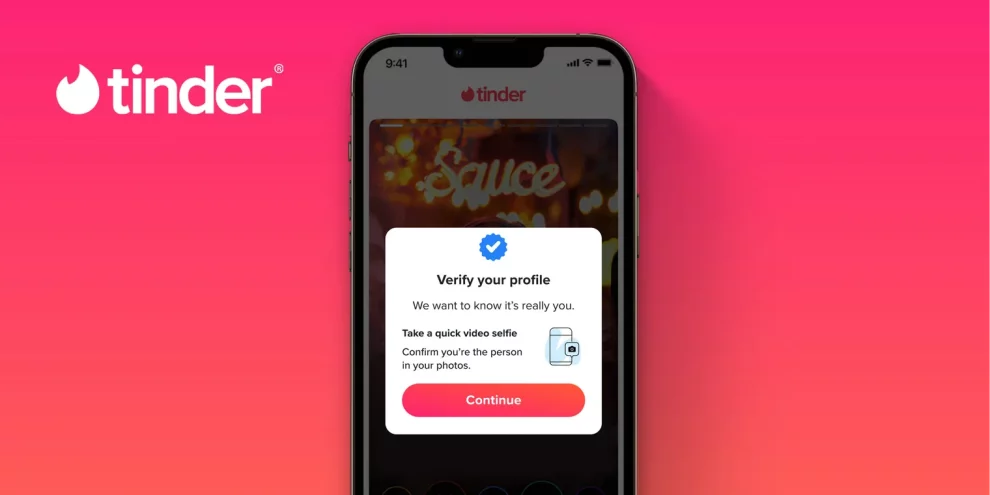In the fast-paced world of online dating, ensuring user safety and building trust are top priorities. With the rise of advanced AI technologies, the threat of fake online dating profiles generated using AI-created images is greater than ever. In response, Tinder has rolled out a new user verification system requiring members to submit video selfies in order to combat fake profiles and catfishing attempts.
The Growing Threat of AI-Generated Fake Dating Profiles
Artificial intelligence has progressed tremendously, empowering computers to generate highly realistic fake media including images, video, and audio. While AI generation has many positive use cases, one alarming trend involves using AI to systematically create fake dating profiles on platforms like Tinder.
With access to huge datasets of images and enough computing power, AI systems can generate photos of fake people who don’t exist in real life. These AI-generated images often look authentic to the human eye, perfectly mimicking subtle details of genuine photos. Scammers and catfishers leverage these fake AI-generated photos when fabricating dating profiles to scam, phish, and take advantage of other users.
The Impact of Fake Profiles on Online Dating
The influx of impressively realistic fake dating profiles powered by AI generation negatively impacts online dating in several key ways:
- Compromises user safety and erodes trust
- Wastes users’ time interacting with profiles that don’t represent real people
- Damagesdating platforms’ reputation and user experience
- Opens the door for financial scams, catfishing attempts, and other malicious activity
Without intervention, the growing sophistication of AI will only make the fake profile problem worse. Dating platforms need robust identity verification measures to maintain users’ trust and ensure legitimate profiles.

Introducing Tinder’s Video Selfie Verification System
To tackle the issue of fake AI-generated dating profiles, Tinder has launched a new profile verification system requiring members to take and submit a real-time video selfie of themselves. The video selfies provide a new form of identity proof to confirm users are indeed real people accurately representing themselves on their profiles.
How Tinder’s Video Selfie Verification Works
When a Tinder user taps the verification prompt after creating their profile, they must complete the following authentication steps:
- Take a short video selfie saying “I’m [first name] and I’m on Tinder” or performing another prompted gesture
- Upload a photo ID for age verification
- Allow Tinder to compare their profile photos against their video to confirm consistency
Once this multi-step verification process is fully completed, the user earns a blue check mark badge displayed on their Tinder profile signaling they have been verified. Other Tinder members can then feel more confident about that user’s legitimacy and authenticity as a real person.
Why Video Selfies Beat AI Generation
Compared to photos, video selfies provide stronger proofs of identity that are much harder for even sophisticated AI to replicate convincingly:
- Motion: Subtle motions and gestures extremely difficult for AI to simulate
- Audio: Distinct voice another layer confirming real human user
- Unpredictability: Wide diversity of possible prompts make videos hard to spoof
Early testing showed video selfie verification to be highly effective, with 96% of fake accounts unable to pass the new safeguard and being promptly removed from Tinder.
Benefits of Tinder’s Video Selfie Verification System
Implementing a mandatory video selfie verification measure brings several important benefits both for Tinder’s business and its broad user base of online daters.
Improved Trust and Safety
The top benefit is considerably bolstered trust and safety across the platform. With more assurance that profiles genuinely represent real people, Tinder users can feel more comfortable connecting with matches, leading to an improved dating experience.
Video selfie verification also deters scammers and bad actors, further strengthening safety. Tinder itself estimates users of verified profiles see a 67% increase in quality matches versus non-verified profiles.
Enhanced User Experience
By verifying identities and reducing fake profiles, Tinder also improves overall user experience. Users waste less time on confusing and frustrating interactions with profiles misrepresenting themselves. This change keeps genuine users more engaged on the platform.
Increased Brand Integrity
Combating fake profiles also bolsters Tinder’s brand integrity as a trusted, reputable dating app that puts user interests first. Maintaining site integrity wards off emerging competition and cements Tinder’s leadership in the online dating space going forward.
Addressing Privacy Concerns Around Video Selfies
Despite the security improvements offered by video selfies, some ethical concerns exist around potential misuse of users’ private video clips. Specifically, some worry Tinder could mishandle the videos or that they may be accessed through hacking.
Tinder claims to store selfie videos securely, access them only for identity verification purposes, and delete them shortly after profile confirmation. Still, they may consider additional measures—like encrypting media or enabling user delete controls—to provide full confidence around video privacy and consent.
The Future of Identity Verification in Online Dating
Looking ahead, Tinder’s rollout of AI-resistant video selfie verification represents the next generation of dating platform safety tech. As artificial intelligence grows more advanced, even more rigorous multi-factor authentication methods will likely be needed to stay ahead of increasingly sophisticated scams.
Tinder itself suggests video selfies are just the first step in its long-term product roadmap focused on trust and safety. The company is actively researching innovations like live selfie sessions and enhanced backend analysis to further fortify protections.
Other top dating apps will feel pressure to keep pace with similar identity confirmations. Video selfies could soon become standard practice across the entire online dating industry as apps vie to keep users safe in the AI era.
The Bottom Line
Tinder’s release of video selfie verifications tackles the serious and growing issue of AI-generated fake dating profiles that compromise user trust. By requiring more robust identity proofing, Tinder empowers users to feel more secure in who they’re meeting, deters scammers, and improves integrity across the platform.
While not a flawless solution, adding video selfie confirmation is a powerful step toward protecting Tinder users that may spark a broader platform-wide shift across online dating.
















Add Comment